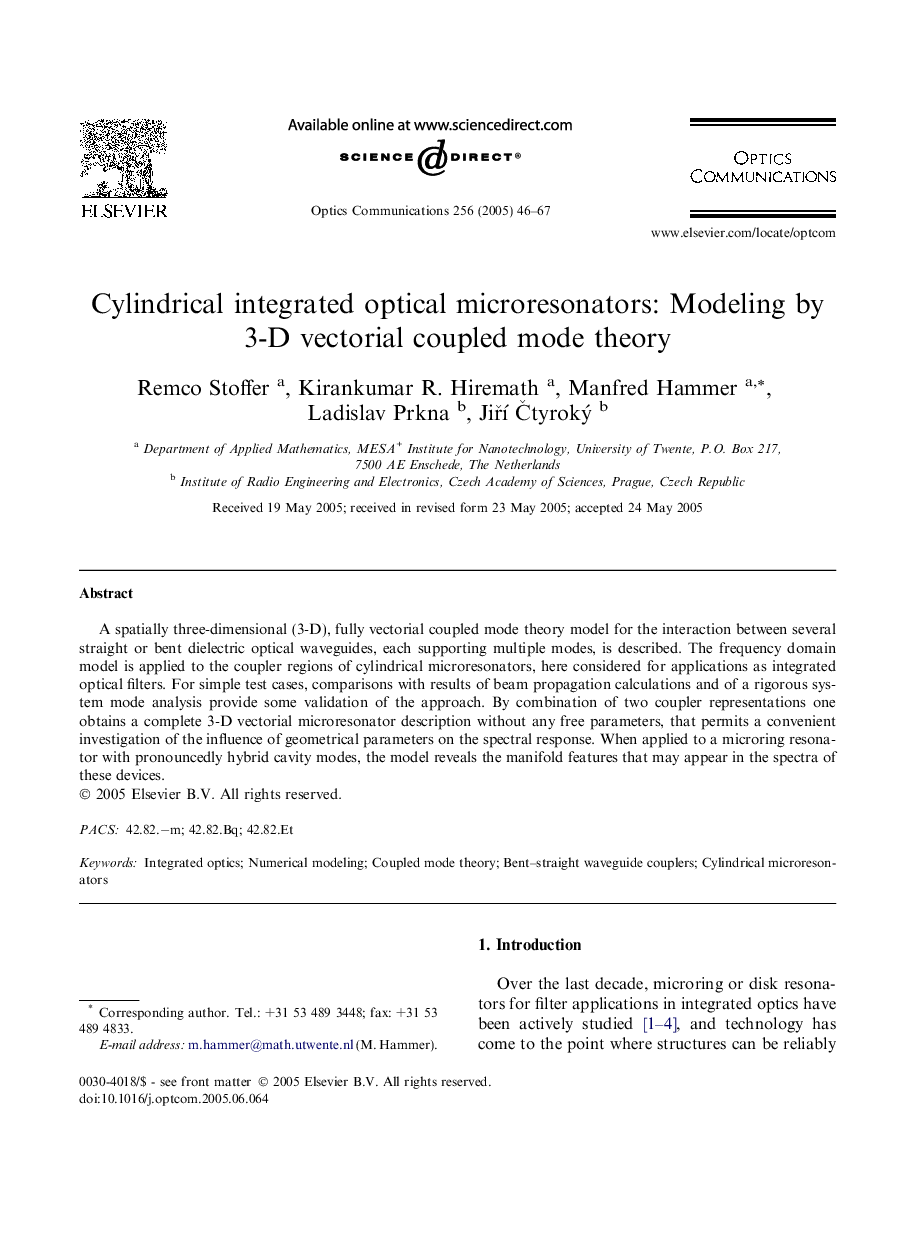| Article ID | Journal | Published Year | Pages | File Type |
|---|---|---|---|---|
| 9785528 | Optics Communications | 2005 | 22 Pages |
Abstract
A spatially three-dimensional (3-D), fully vectorial coupled mode theory model for the interaction between several straight or bent dielectric optical waveguides, each supporting multiple modes, is described. The frequency domain model is applied to the coupler regions of cylindrical microresonators, here considered for applications as integrated optical filters. For simple test cases, comparisons with results of beam propagation calculations and of a rigorous system mode analysis provide some validation of the approach. By combination of two coupler representations one obtains a complete 3-D vectorial microresonator description without any free parameters, that permits a convenient investigation of the influence of geometrical parameters on the spectral response. When applied to a microring resonator with pronouncedly hybrid cavity modes, the model reveals the manifold features that may appear in the spectra of these devices.
Related Topics
Physical Sciences and Engineering
Materials Science
Electronic, Optical and Magnetic Materials
Authors
Remco Stoffer, Kirankumar R. Hiremath, Manfred Hammer, Ladislav Prkna, JiÅà Ätyroký,
